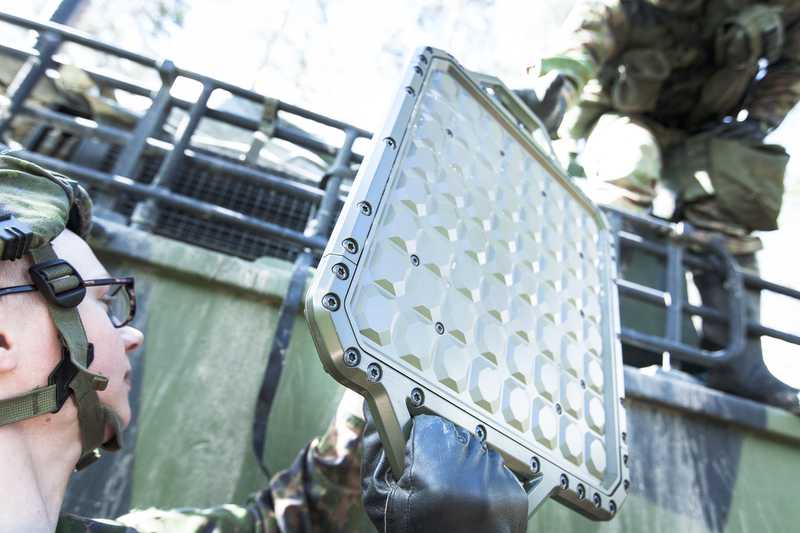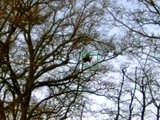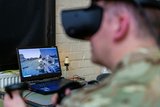How to future-proof military connectivity against complex threats (Studio)
Brought to you in partnership with Bittium
The vulnerability of communication and GPS systems was starkly illustrated in March when Finland’s Transport and Communications Agency revealed widespread disruption to GPS signals.
This was last experienced in 2018 when authorities blamed Russia for widespread signal jamming during a large-scale NATO exercise in northern Norway.
According to Bittium’s Vice President for Defence and Security, Harri Romppainen, armed forces today require new tactical communications capabilities to overcome many of these modern operational restrictions.
For every echelon to benefit from maximum levels of situational awareness and C2, even when operating in the most contested of environments, they must be able to share optimal amounts of data across Narrowband, Wideband Waveforms and Internet Protocol (IP) networks.
As Finland’s national champion for tactical communications, Bittium is poised to support the connectivity requirements of the World’s most advanced armed forces.
Romppainen explained that the company provides innovative connectivity to those who need it most, whether they are undertaking asymmetric warfare or great power conflict.
Central to Bittium’s connectivity solution is the Tactical Wireless IP Network (TAC WIN) – a broadband and mobile Internet Protocol (IP) backbone network designed to provide forward-deployed brigades down to battlegroups with up to 50 Mbps in data throughput.
Optimised connectivity
TAC WIN is already in service, for example, with the Finnish Defence Forces (FDF), the Estonian Defence Forces, and is in the integration phase with the Austrian Armed Forces, providing high performance levels across the full spectrum of mission sets.
It is a field-proven system with thousands of tactical routers and radio heads supplied since 2011. The latest framework agreement with the FDF applies to the years 2021-2024, with orders coming in each year, said Romppainen.

TAC WIN is a modular system that supports Mobile Ad Hoc Network (MANET), Point-to-Multipoint, and Point-to-Point networks, optimised to create and maintain maximum levels of command and control, situational awareness and information security, no matter where or when troops are operating.
TAC WIN is currently available in three configurations: Radio Head I (225 – 400 MHz), Radio Head III (1350-2400 MHz) and Radio Head IV (4400-5000 MHz).
The system enables the simultaneous transmission of critical mission data to up to 1000 nodes in one network. It supports data throughput levels between 12 and 50 Mbps, depending on signal strengths, and provides low latency levels associated with voice and data calls at less than 20ms between hops.
Romppainen said the system is future-proofed against today’s threats as well as future ones. Indeed, the TAC WIN deliveries come with the latest Waveform design by Bittium, which keep pace with emerging demand signals from across the contemporary operating environment.
Bittium’s proprietary portfolio of waveforms includes the TAC WIN wideband waveform and Bittium Narrowband Waveform. The company is also a major R&D contributor in the continuous development of the pan-European ESSOR High Data Rate Waveform.
The waveforms enable armed forces to conduct frequency hopping, anti-jam, jamming detection, and interference cancellation operations as efficiently as possible, even in the most contested operating environments.
TAC WIN also provides users with integrated protection against electronic countermeasures that assure critical communications pathways, no matter what interference highly-capable adversaries attempt.
The TAC WIN system is non-dependent upon external time sources, including Global Navigation Satellite Systems (GNSS) like the GPS.

TAC WIN can also aggregate various network types to support Primary, Alternate, Contingency and Emergency (PACE) communications plans for commanders.
Options include various types of tactical radio connections and fibre optic and field wire-based communications networks. TAC WIN automatically routes to ensure the most robust and reliable voice and data traffic pathway.
Even in areas of limited connectivity, TAC WIN supports Quality of Service classes that allocate throughput to the most critical systems to ensure end-users can continue with a mission.
For example, battle management systems will be prioritised to ensure necessary levels of situation awareness during missions over less important battlefield applications that might be left without service for a time.
Smart interfaces
Configuration of TAC WIN is achieved through an intuitive graphical user interface which can be accessed using a web browser on end-user devices, including rugged laptops and tablets.
Furthermore, Bittium’s Tactical Network Management system provides users with a tool kit for continuous network planning, real-time monitoring of the network and analysis of network behaviours. This allows operators to view nodes that might be affected by enemy jamming and illustrate optimal connectivity pathways across the battlefield.
The management system also enables TAC WIN to verify network connectivity and consider and overcome restrictions in topology.
As a self-healing, resilient and low latency network, TAC WIN supports the entire spectrum of military operations. As a multi-domain solution, it enables the integration of air, land, and sea assets across the battlespace.
As Romppainen confirmed, in addition to supplying TAC WIN to land forces, Bittium offers the integration of TAC WIN into air defence networks, radar and sensor networks, and counter-unmanned aerial systems.
For maritime applications, TAC WIN provides wideband connectivity for surface-to-shore and surface-to-surface communications.
More from Studio
-
![Combat-proven capabilities: How precision-strike systems are evolving for tomorrow’s battlespace (podcast)]()
Combat-proven capabilities: How precision-strike systems are evolving for tomorrow’s battlespace (podcast)
Combat-tested technology is being reshaped to counter A2/AD threats, reduce reliance on GPS and enable faster, more autonomous targeting in complex environments. In this special podcast, experts explain how the evolving threat landscape is shaping next-generation strike capabilities.
-
![Energy evolution: How laser defence systems are powering the next phase of air defence (podcast)]()
Energy evolution: How laser defence systems are powering the next phase of air defence (podcast)
Laser-based air defence is moving from promise to deployment as global threats evolve. In this special podcast, we explore how high-energy laser systems are reshaping interception strategies.
-
![Intelligence advantage: How real-time GEOINT is reshaping military decision-making (Studio)]()
Intelligence advantage: How real-time GEOINT is reshaping military decision-making (Studio)
In today’s contested operational environment, adaptability is key. The new Geospatial-Intelligence as a Service (GEO IaaS) solution from Fujitsu and MAIAR empowers militaries by enabling intelligence advantage, combining advanced technology with human expertise to deliver actionable insights.
-
![Training Together: Unlocking Educational Excellence through Military and Industry Collaboration (Studio)]()
Training Together: Unlocking Educational Excellence through Military and Industry Collaboration (Studio)
Military training is ultimately about people. At Capita, training programmes are built on close engagement with partners, delivering an educational approach that can adapt to individual needs, cultivate leadership – and drive wider cultural change.
-
![Enhancing Military Training Through Digital Technology (Studio)]()
Enhancing Military Training Through Digital Technology (Studio)
Digital technologies offer huge opportunities for defence training. However, militaries must adopt an agile approach, placing the needs of their organisations and personnel at the centre of their efforts.
-
![Layered Defence: How new technologies are enhancing armoured vehicle survivability and manoeuvrability (Studio)]()
Layered Defence: How new technologies are enhancing armoured vehicle survivability and manoeuvrability (Studio)
As modern threats evolve, armoured fighting vehicles face a new era of challenges, from loitering munitions to kinetic energy projectiles. Advances in active, passive, and reactive protection systems are crucial to ensuring battlefield dominance, freedom of manouver and vehicle survivability.

























